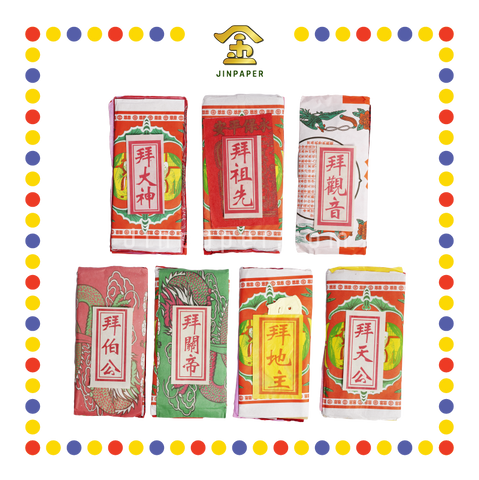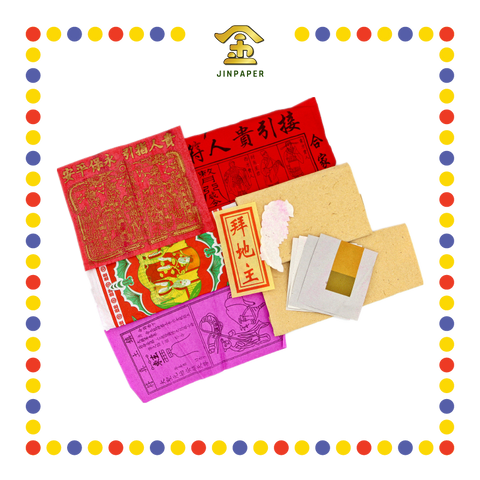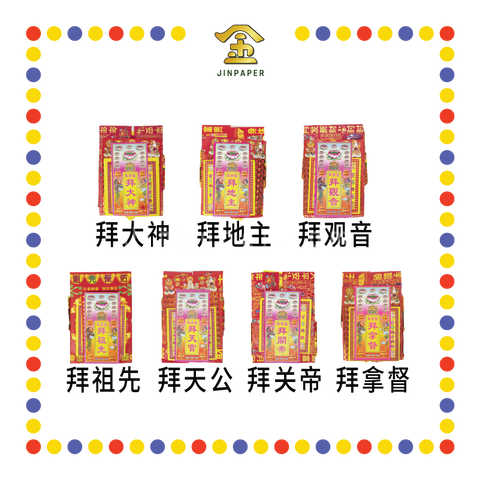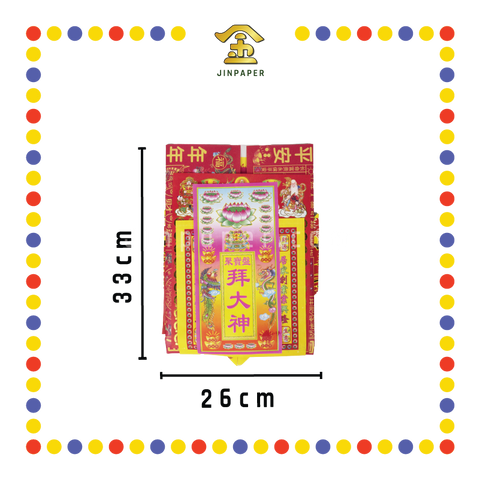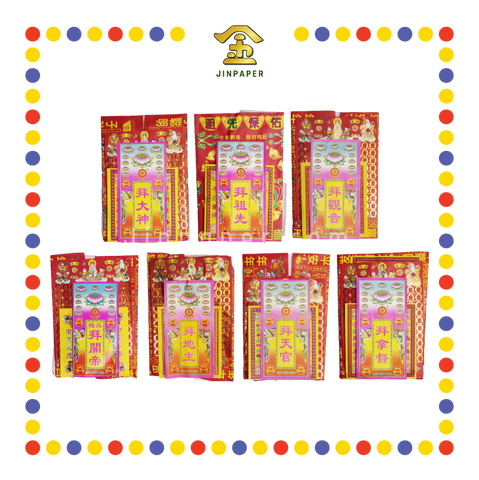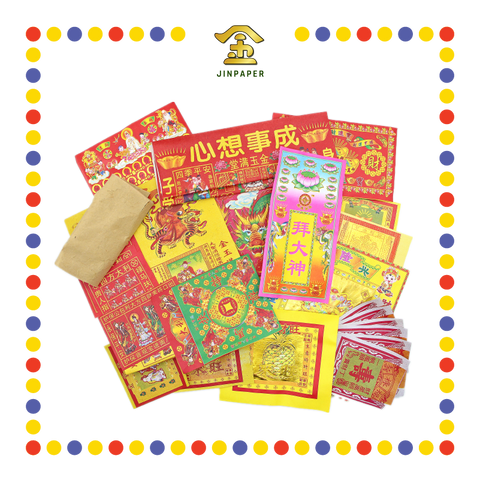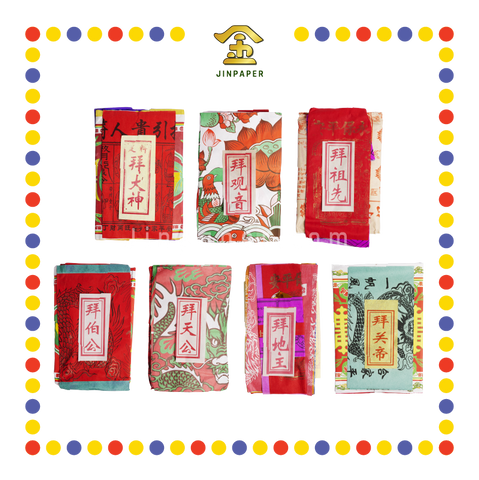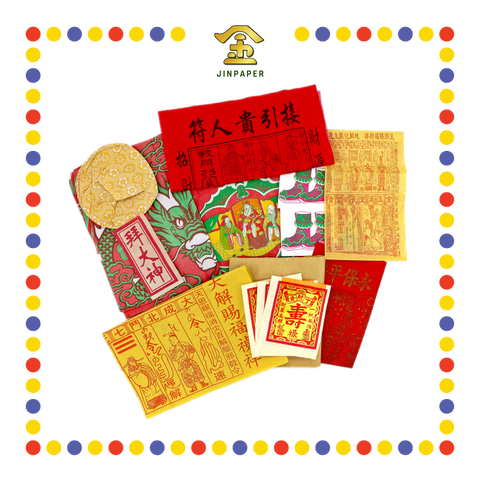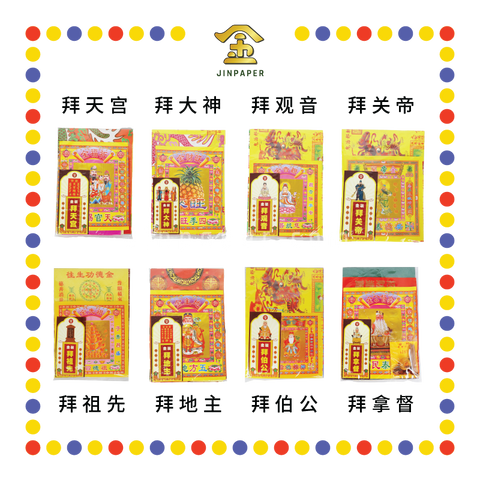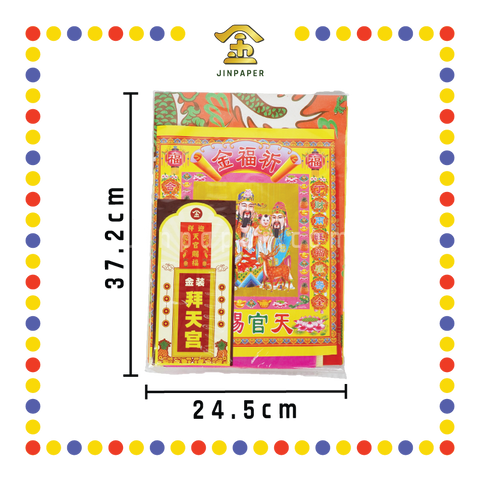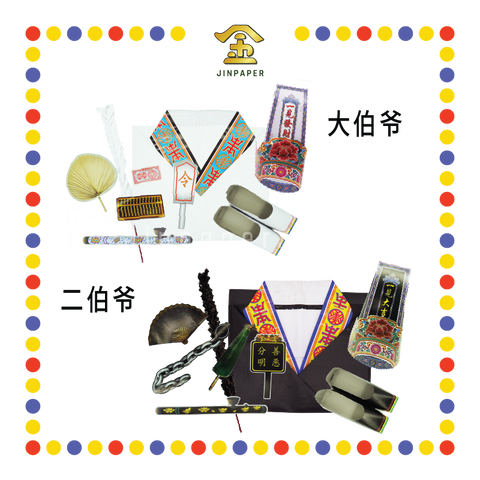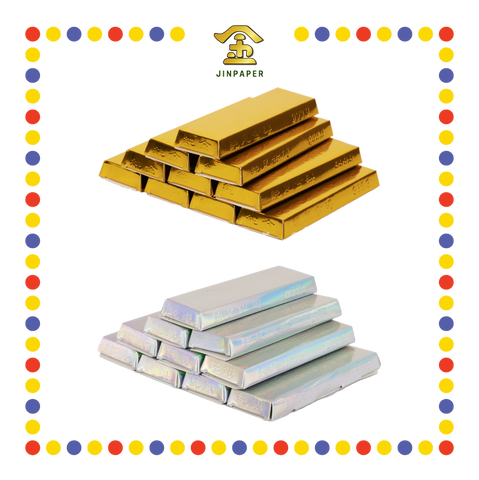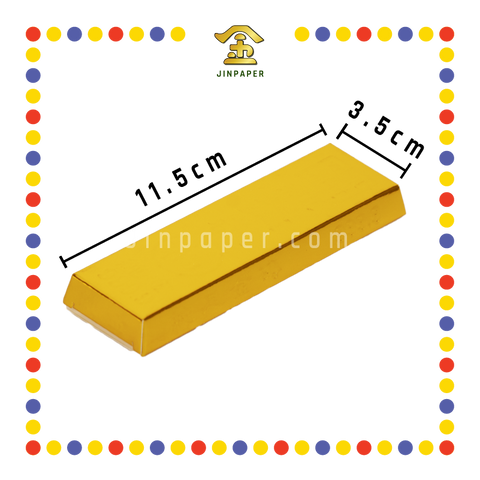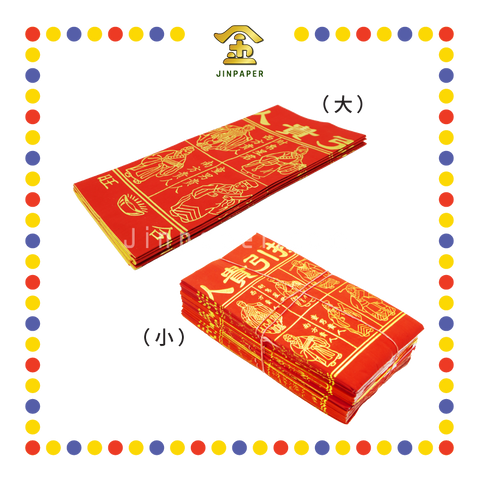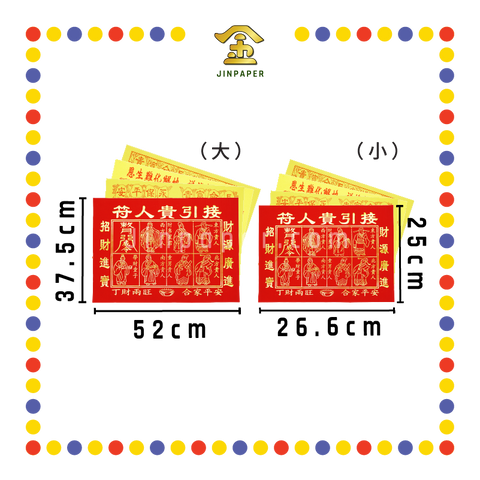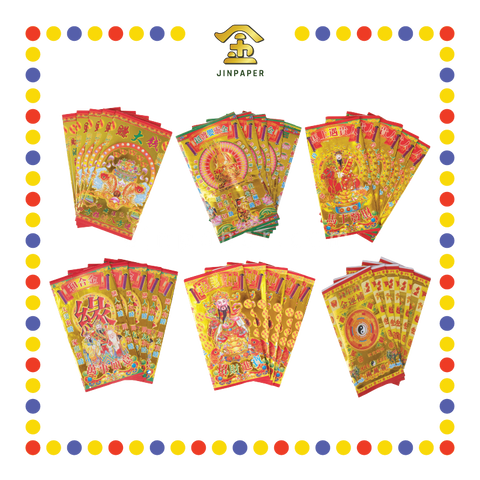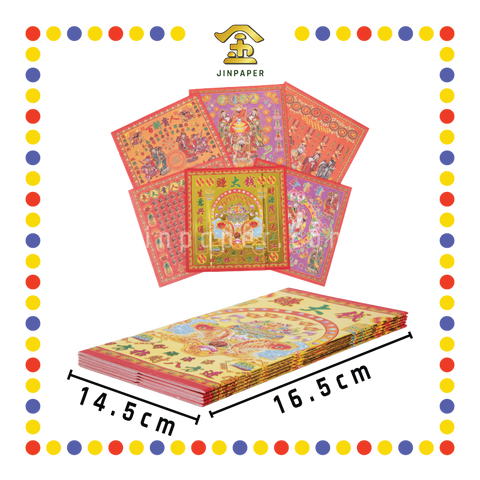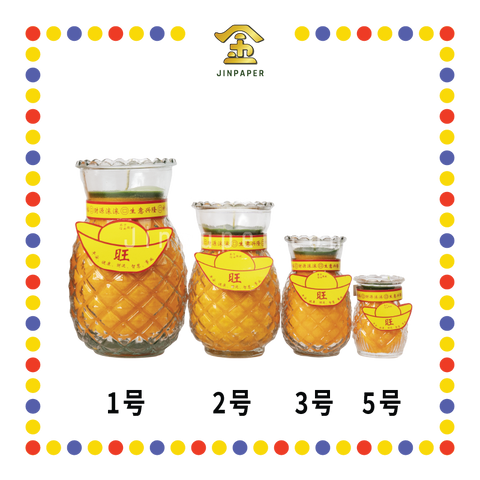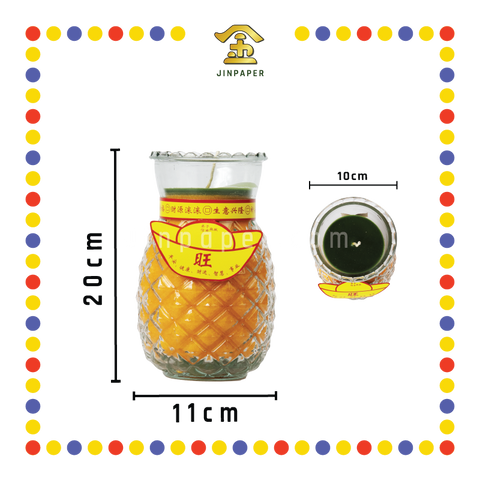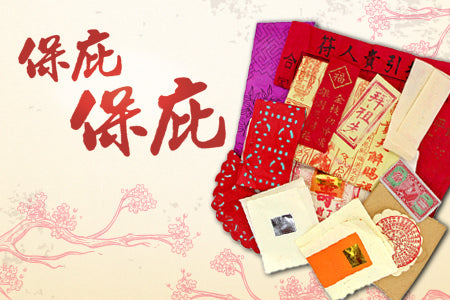Joss Paper Money in Malaysia: A Complete Guide

Commonly known as ghost money or spirit money, joss papers are offerings dedicated to the worship of ancestors or deceased friends and family members. Some rituals also see the burning of joss paper for prosperity, fertility and settling karmic debts.
Joss paper is often made from coarse bamboo paper, but rice paper is sometimes a viable substitute. In Chinese folklore, the act of burning joss paper is a way of paying tribute so that the spirit of the deceased can exist comfortably in the netherworld.
Depending on the type of spirit being worshipped, different types of spirit money can be burned. These come in cash/copper for the newly departed, silver for ancestral spirits and local deities, and gold, which can go to either the deceased or gods with higher statuses.
History of Joss Paper
The Chinese believe that when people die, they enter ‘Hell’. However, this is not so much a place of torture as represented in Western cultures as it is a neutral realm where all the dead get sent to. Here, the deceased are judged for their actions in life to determine whether or not they deserve a ticket to heaven, or even reincarnation. And depending on the sins committed, the spirit may be subjected to certain punishments before being granted redemption. All this falls under the jurisdiction of the King of Hell, and as such, in an attempt to ease the punishment of the deceased, the living burn joss money as a tribute to the King.
This practice can be traced all the way back to 1000 BC, according to archaeological discoveries of imitation money left in ancient tombs. The spirit money is a modernization of that principle, taking the form of paper or papier-mâché structures. In recent years, spirit money can even be found as banknotes. Bills can come in numerous real-life currencies, and will generally have an illustration of the Jade Emperor on the front, and the ‘Bank of Heaven and Hell’ on the back.
Types of Chinese Joss Paper
When it comes to the manufacture of joss paper, there may be differences in design, depending on the region, the purpose of the joss paper, and the cultural trend. Joss paper is typically found as rectangular paper sheets with a smaller, square-shaped foil in the center which can be made of either gold or silver. Alternative designs could involve the use of certain seals, stamps, pieces of contrasting paper, and engravings. Here are some examples:
Gold and Silver Foil

Chinese Joss Paper - Gold and Silver Foil. Source: JinPaper
This is the most common type of joss paper you’ll find. By convention, the Gold and Silver Foil is made from coarse bamboo paper, and decorated with a gold or silver square in the middle to represent wealth.
- Primarily used during funerals, ancestors’ birthdays, the Qing Ming festival, and the Hungry Ghost festival.
- Exclusively used as a medium to send the deceased currency or material goods to use in the afterlife
Large Gold and Silver Foil

Chinese Joss Paper - Large Gold and Silver Foil. Source: JinPaper
The Large Gold and Silver Foil is similar to its smaller counterpart, but with a larger foil embedded onto the paper.
- Not all that different to the smaller version in terms of function; choosing one over the other is more a matter of personal preference
- Like the regular Gold and Silver Foil, these can be burned in their original form, or folded into more elaborate crafts such as the gold ingot
Bank Notes of Heaven and Hell

Chinese Joss Paper - Hell Bank Notes - U.S. Dollar - $10,000 USD. Source: JinPaper
Often seen in contemporary rituals, these are illustrated to resemble actual legal tender, and give the “joss paper money” term its namesake.
- Also known as ‘Hell Bank Notes’ for its status as the official currency of the netherworld.
- Can come in various real-life currencies like the US dollar, Chinese yuan, and so on.
- Treated as a burnt offering to the King of Hell, so that verdicts may be more lenient on the deceased.
- Features the Jade Emperor — the Taoist monarch of Heaven — on the front, and the Bank of Heaven and Hell on the back. Certain illustrations also feature the signatures of both the Jade Emperor and the King of Hell.
- Contrary to the exorbitant denominations depicted, the notes themselves are usually affordable even for poorer families. You can find some of them here.
Longevity Paper

Chinese Joss Paper — Gold Foil — “Longevity”. Source: JinPaper
The Longevity Paper is made of bamboo paper with a large gold foil on top, and is adorned with the Chinese character for longevity.
- An alternative to typical joss papers, the Longevity Paper symbolizes wisdom, prosperity and smooth sailing. Check out some of them here.
- One of the most versatile joss papers out there, the Longevity Paper is often used in prayer to gods and spirits of various ranks. Examples include Thean Hou, Guan Sheng Di Jun, and Tu Di Gong.
Joss Paper Crafts

Large mansion constructed from joss paper. Source: JinPaper
To meet the certain needs of the deceased, living relatives may sometimes fold joss papers into elaborate structures such as houses, cars, and clothes. This is aimed to provide the spirit with material goods that they can use in the afterlife.
- While houses and cars may be some of the most common paper offerings, there isn’t any restriction on what you choose to burn. Some have taken to burning paper dolls depicting servants, furniture, and even cigarettes.
Gui Ren Fu

Gui Ren Zhi. Source: Jave Wu Taoism Place
Gui Ren Fu, or Gui Ren Zhi as it’s sometimes called, roughly translates to Talisman of Ushering in the Deities of Prosperity and Fortune. In Chinese, Gui Ren refers to someone of great help to you. Much like how it’s described, Gui Ren Fu is aimed at inviting in the blessings of the divine to assist you in your everyday endeavours.
- The Gui Ren Fu comes in both red and yellow, with each serving a different purpose respectively.
- Burning Gui Ren Fu follows a certain set of steps and requirements. One is expected to perform the ritual correctly in order to garner the blessings of fortune.
Jin Yuan Bao

Different colored joss papers folded into ingots. Source: JinPaper
The gold ingot(Jin Yuan Bao) is an ancient Chinese currency that was used up until the fall of the Qing dynasty in the 20th century. To this day, it represents a symbol of great wealth, and paper imitations are often burned alongside hell money during Qing Ming and the Hungry Ghost festivals.
- A common folding technique amongst those wishing to pay respects to the dead, the Jin Yuan Bao requires two sheets of joss paper to construct and is usually done in a few minutes.
Why Burn Joss Paper?
As Chinese, the values of a moral responsibility towards our parents and elderly is heavily ingrained into our development from childhood. Filial piety is a prominent virtue that’s prominent in Confucian, Buddhist and Taoist ethics. And in funerals and death anniversaries, we don’t only cherish the memories of those lost, we are taught to demonstrate the proper courtesy towards our deceased. This is evidenced by the many rituals and practices to honor the dead.
As mentioned, joss paper symbolizes wealth and material goods. In burning them, we are essentially releasing them from the confines of the living, so that they may be received and used by those in the afterlife. Generally, they serve to pay tribute to the King of Hell so that the spirit may be released from punishment and finally be reborn. However, they are also sometimes seen as an offering to the dead itself. The numerous forms they take is a symbolic gesture from those still living that the deceased may find use for such things within the transcendent realm. For example, a mansion replete with servants, or a set of luxurious clothing.
When to Burn Joss Paper?
While there isn’t a strict timing on when a person should burn joss paper, the Chinese do observe certain occasions throughout the year. Burning joss paper on each of these dates carry a different meaning and follow a particular set of steps to perform. Here are some you may be familiar with (and some not so much).
Funerals

Burning ghost money in front of a tomb. Source: Culture Trip
According to Chinese belief, a person’s soul enters the afterlife when they die. However, depending on the karmic debt accrued in life, it is considered bad luck to be embarking on the journey into the netherworld empty-handed. That is why it is common to see spirit money being burned during a memorial service, so that the deceased will not be deprived of the luxuries in death as they may have been in life. Aside from the conventional joss paper sheets, this is also the time when elaborate paper structures like houses, cars, credit cards and mobile phones will enter the fiery mound.
Ancestor Birthdays and Death Anniversaries

Hell bank notes being burned. Source: Culture Trip
The mood for ancestor birthdays and death anniversaries are generally not as solemn as funerals. During this time, family members get together to commemorate departed loved ones and show their appreciation.
Qing Ming Festival

People visiting the cemetery to burn prayer papers and place food in front of the family’s graveyard as a sign of respect in conjunction with the Qing Ming festival at Georgetown, Penang. Source: Malay Mail
Qing Ming — otherwise known as the tomb sweeping ceremony — is the time of the year when the tombs of the dead are cleaned up and maintained. The living will often burn large offerings during this time, as it is the most prominent celebration in the Chinese calendar for honoring the dead.
Hungry Ghost Festival

Hell notes are offered in mounts to wandering spirits at the end of the prayer session in Queen Street, Penang. Source: Malay Mail
The Hungry Ghost festival takes place during the Ghost Month, when the deceased are temporarily released from the netherworld and visits the realm of the living. Here, offerings tend to be simpler, as it is meant to appease wandering spirits with no one to care for. It is also common to see makeshift altars constructed by the roadside, decorated with food, joss candles and joss paper offerings.
Daily Life

Burning joss paper is a thousands year old ritual of the Vietnamese. Source: JinPaper
Outside of marked celebrations, one can also burn joss paper whenever a loved one is remembered. Some families practice a routine of burning on the 1st and 15th of every lunar month, while others see to it before large festivities like Chinese New Year. Ultimately, it is up to personal preference.
How to Burn Joss Paper?
There isn’t really a rigid how-to tutorial on burning joss paper. All you really need are the paper materials, a flame and a basin to shelter the fire. In Southeast Asia, the basin, or joss paper burner, is commonly found in the form of large red barrels with numerous vents on the side for airflow. These joss paper burners not only help to contain the flame, but also allow for easy disposal of the ashes afterward. They also sometimes come with legs or wheels for extra support and mobility.

A joss burner sits in front of a small altar. Source: JinPaper
Like we previously mentioned, joss paper can be burned as is, but you may also fold them in half or craft them into more elaborate structures before lighting them up. Some also observe the practice of writing the names of loved ones on the back of an offering before burning, then making a silent prayer.
As a general rule of thumb, do note that the practice itself is an expression of one’s sincerity, and you must always treat the joss papers with care. Superstitious beliefs warn against recklessly tossing them into the fire, playing with them, or casually stepping on them as it is very disrespectful and heavily frowned upon. After all, while they don’t hold physical value in the realm of the living, they are treated as real currency amongst the transcendent.
Conclusion
All in all, there aren’t too many hoops to jump through when burning joss papers. As long as there is sincerity behind your actions, there is little else for you to worry about. We hope that this list has helped you identify the different types of joss papers and the functions they serve.
And if you fancy checking out one of the best joss paper manufacturers in Malaysia, be sure to visit us at JinPaper! We produce joss paper, joss sticks and many more products to suit your praying needs. Also, if you think there’s something we should be adding to this list, let us know in the comments!
